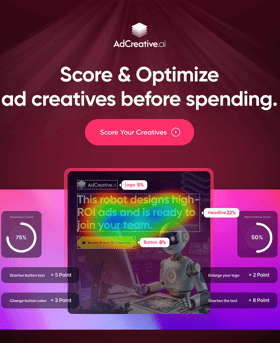Comprehensive Guide to Learning AI: Certified Courses, Building AI Platforms, and Practical Applications
FEATUREDTEXT TO SPEECH AIAI


This guide will explore the best-certified courses for AI learning, provide insights on building AI generators, and offer a detailed example of creating an AI for a gym from scratch.
Artificial Intelligence (AI) has become a cornerstone of modern technology, transforming industries and everyday life. For those looking to delve into AI, learning how to program and build AI platforms is a valuable and rewarding endeavor. This guide will explore the best-certified courses for AI learning, provide insights on building AI generators, and offer a detailed example of creating an AI for a gym from scratch.
Best Certified Courses for AI Learning
Getting certified in AI can open doors to numerous opportunities in various sectors. Here are some of the top courses that provide comprehensive AI education:
1.1. Coursera - Machine Learning by Stanford University
Overview: Taught by Andrew Ng, this course is a foundational class that covers a wide range of machine learning topics, including supervised learning, unsupervised learning, and best practices. It's highly accessible, making it suitable for beginners.
Certification: Upon completion, students receive a certificate from Stanford University.
Key Skills: Linear regression, logistic regression, neural networks, support vector machines, anomaly detection, recommender systems, and clustering.
1.2. edX - AI for Everyone by IBM
Overview: This course is designed for non-technical individuals who want to understand AI's impact and applications. It provides a solid foundation without delving too deeply into coding.
Certification: A verified certificate from IBM.
Key Skills: Basic AI concepts, ethical considerations, business applications of AI, and the societal impact of AI.
1.3. Udacity - Artificial Intelligence Nanodegree
Overview: This nano degree program covers AI programming with Python, including probabilistic reasoning, machine learning, computer vision, and natural language processing. It offers a mix of theoretical knowledge and practical projects.
Certification: A certificate from Udacity.
Key Skills: Python programming, AI algorithms, and hands-on projects such as creating chatbots and image classifiers.
1.4. MIT OpenCourseWare - Introduction to Deep Learning
Overview: An in-depth course focusing on deep learning techniques and their applications. It is highly technical and suited for those with a programming and basic machine learning background.
Certification: No formal certification, but highly respected material from MIT.
Key Skills: Neural networks, deep learning, convolutional neural networks (CNNs), recurrent neural networks (RNNs), and generative adversarial networks (GANs).
How to Build AI Generators
AI generators create outputs based on provided inputs using machine learning models. Here's a step-by-step guide to building a basic AI generator:
AI generators create outputs based on provided inputs using machine learning models. Here's a step-by-step guide to building a basic AI generator:
2.1. Define the Purpose
Determine what your AI generator will do. Examples include image generation, text generation, or data prediction. Clearly defining the purpose helps in choosing the right model and data.
2.2. Gather and Prepare Data
Collect data relevant to your generator's purpose. Clean and preprocess this data to ensure it's suitable for training your model. For instance, if building a text generator, gather a large dataset of text documents.
Steps for Data Preparation:
Data Collection: Use web scraping tools, public datasets, or proprietary data sources.
Data Cleaning: Remove duplicates, handle missing values, and normalize the data.
Data Splitting: Divide the data into training, validation, and test sets (typically 70-20-10% split).
2.3. Choose an AI Framework
Build your model using a framework such as TensorFlow, PyTorch, or Keras. These frameworks provide tools and libraries to simplify the development process.
Popular AI Frameworks:
TensorFlow: Developed by Google, it offers extensive support and a large community.
PyTorch: Known for its flexibility and dynamic computation graph, favored by researchers.
Keras: High-level API running on top of TensorFlow, ideal for beginners due to its simplicity.
2.4. Design and Train the Model
Designing the Model:
Choose a model architecture that fits your needs. For text generation, a recurrent neural network (RNN) or a transformer model like GPT-3 could be suitable. Convolutional neural networks (CNNs) or GANs are often used for image generation.
Define the input and output layers based on your data and task.
Training the Model:
Initialize the Model: Set up the architecture using the chosen framework.
Compile the Model: Define the loss function, optimizer, and evaluation metrics.
Train the Model: Use the training data to teach the model. Monitor performance using the validation set.
Tune Hyperparameters: Adjust learning rate, batch size, and other parameters to improve performance.
2.5. Evaluate and Fine-Tune
Assess the model's performance using validation and test data. Fine-tune the model by adjusting hyperparameters, using more data, or changing the model architecture.
Evaluation Metrics:
Accuracy: For classification tasks.
Mean Squared Error (MSE): For regression tasks.
BLEU Score: For text generation tasks.
2.6. Deploy the Generator
Deploy the trained model to a platform where it can be used to generate outputs based on new inputs. Options include cloud services like AWS, Google Cloud, or on-premises servers.
Deployment Steps:
Model Export: Save the trained model in a format compatible with the deployment environment.
Set Up the Environment: Configure the necessary infrastructure, such as cloud services or local servers.
Integration: Connect the model with user interfaces or APIs to enable interaction.
Example: Building an AI for a Gym from Scratch
Let's consider creating an AI system for a gym. This AI will analyze member workouts, provide personalized recommendations, and track progress.
How to make over 100 ads creative?
3.1. Define Objectives
Personalize Workout Plans: Create tailored workout plans based on individual member data.
Track and Analyze Performance: Monitor workout performance and provide feedback.
Enhance Member Engagement: Offer real-time feedback and motivation to keep members engaged.
3.2. Data Collection
Gather data on member workouts, including exercise types, duration, intensity, and personal fitness goals. This can be done using wearable devices, gym equipment sensors, or manual entry through an app.
Data Collection Tips:
Use APIs from wearable devices like Fitbit or Apple Watch to collect real-time data.
Implement RFID or NFC tags on gym equipment to automatically log exercise details.
Create an intuitive mobile app for members to log workouts manually.
3.3. Choose the Right Model
Consider models like collaborative filtering or matrix factorization for recommendation systems. Neural networks might be appropriate for more complex tasks.
Model Choices:
Collaborative Filtering: Uses member preferences to recommend workouts.
Matrix Factorization: Decomposes the member-workout matrix to identify patterns.
Neural Networks: These predict workout effectiveness based on historical data.
3.4. Develop the AI System
Data Preprocessing: Clean and normalize the collected data.
Handling Missing Values: Impute or remove missing data points.
Feature Scaling: Normalize features to ensure consistent input ranges.
Encoding Categorical Variables: Convert non-numeric data into numerical form using techniques like one-hot encoding.
Model Training: Train the model using historical workout data to identify patterns and preferences.
Training Pipeline: Set up a pipeline to automate data preprocessing, model training, and evaluation.
Cross-Validation: Use k-fold cross-validation to ensure the model generalizes well to new data.
Regularization: Apply techniques like dropout or L2 regularization to prevent overfitting.
Integration: Integrate the AI system with the gym's existing software, ensuring it can access and process data in real time.
API Development: Create APIs to connect the AI system with the gym's software.
User Interface: Develop user-friendly interfaces for gym members and trainers to interact with the AI.
3.5. Testing and Deployment
Test the AI system with a small group of gym members to gather feedback and refine its recommendations. Once optimized, deploy the system across the entire gym.
Testing Strategies:
A/B Testing: Compare the AI-powered recommendations with traditional methods to measure effectiveness.
User Feedback: Collect qualitative feedback from members to identify areas for improvement.
3.6. Continuous Improvement
Regularly update the AI system with new data and refine its algorithms to improve accuracy and relevance of recommendations.
Improvement Techniques:
Incremental Learning: Continuously train the model with new data without retraining from scratch.
User Feedback Loop: Use member feedback to adjust recommendations and improve user satisfaction.
Conclusion
Learning AI and building AI platforms is an exciting journey that can lead to innovative solutions across various industries. Following this guide, you can start your AI education with top-certified courses, understand the steps to build AI generators, and gain practical insights with a detailed example of creating an AI for a gym. As AI continues to evolve, the skills and knowledge you acquire will be invaluable in shaping the future of technology.



